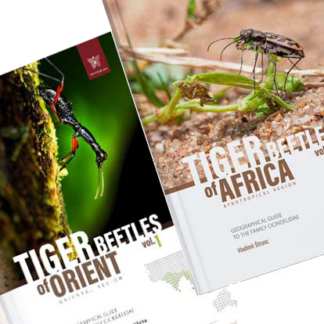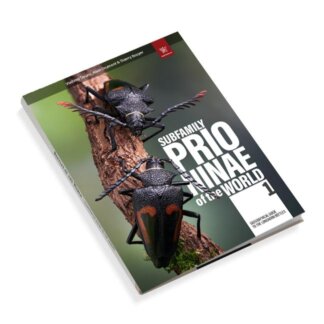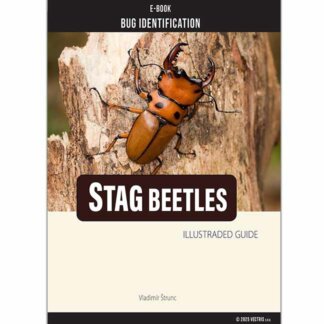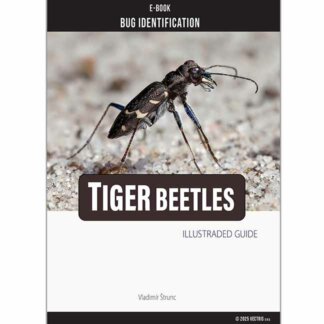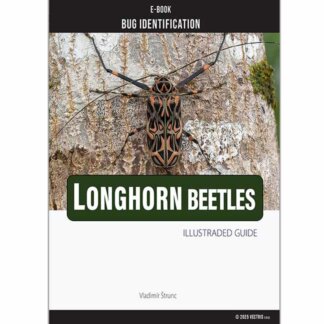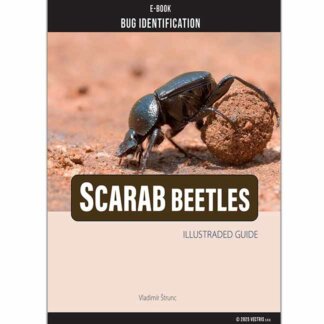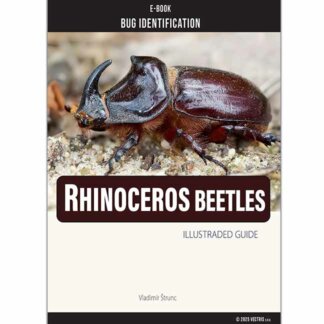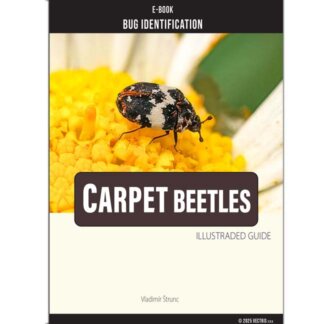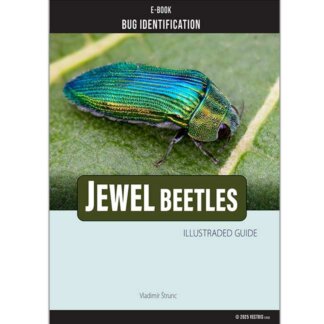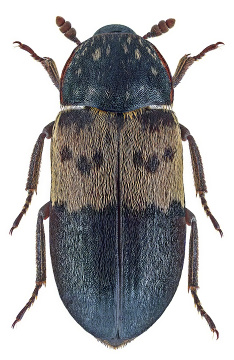A Comprehensive Analysis
Beetles
Field Guides
Field Guides for Insect Identification
Insect field guides serve as essential tools for identifying the vast diversity of insects that exist in our ecosystems. These specialized references combine detailed illustrations, photography, and scientific descriptions to help users—from professional entomologists to curious naturalists—accurately identify insects encountered in various environments. This report explores the types, features, and evolution of insect field guides, examining their significance in scientific research, ecological management, and public education.
Buy now. List of family Coleoptera
You can find here: Carabidae, Buprestidae, Cerambycidae, Cicindelidae, Scarabaeidae, Lucanidae, Chrysomelidae, Curculionidae, Staphylinidae

Books about Beetles
Unique pictorial atlases for identifying Beetles:
The Purpose and Function of Insect Field Guides
Insect field guides fulfill the critical role of making entomological knowledge accessible to diverse users by providing systematic methods for identifying the estimated one million described insect species worldwide. These guides help bridge the gap between scientific expertise and practical application, enabling users to distinguish between beneficial insects and pests, understand ecological relationships, and make informed management decisions.
In forest ecosystems, guides like the “Field Guide to Insects and Diseases of Arizona and New Mexico” published by the USDA Forest Service highlight how insects function as “naturally occurring components of ecosystems” that “play an important role in dynamic processes.” These guides explain how insects “affect short- and long-term vegetative structural diversity, provide food and habitat for animals, and contribute to biological diversity”. By facilitating accurate identification, field guides help forest managers recognize that insects, alongside fire, represent “major disturbance agents in the Southwest” that can significantly influence forest succession and structure.
For agricultural professionals, accurate insect identification proves crucial for effective pest management. As noted in the Extension Pesticide Applicator Training Series from New Mexico State University, “Identification is critical to distinguish between insect pests and beneficial insects”. Field guides provide the reference materials necessary for this distinction, helping farmers and pest management professionals implement targeted control strategies rather than unnecessary broad-spectrum approaches.
Beyond practical applications, insect field guides nurture scientific literacy and environmental appreciation among the general public. They invite users to observe insects more closely, recognize patterns in morphology and behavior, and develop deeper understanding of ecological relationships. In an era of declining insect populations and biodiversity loss, these guides contribute to conservation efforts by raising awareness about the importance of insects in global ecosystems.
Types and Evolution of Insect Field Guides
The landscape of insect field guides has diversified significantly over time, evolving from simple illustrated manuals to sophisticated multimedia resources. This evolution reflects both technological advancements and growing recognition of insects’ ecological and economic importance.
Print Field Guides
Traditional print guides remain foundational resources, offering tangible references that function reliably in field conditions without requiring power or connectivity. These guides typically follow one of several organizational approaches:
Regional guides focus on insects within specific geographical areas, making identification more manageable by limiting the covered species. “A Field Guide to Common Texas Insects” by Bastiaan M. Drees and John A. Jackman exemplifies this approach, providing “a photographic guide to some of the more common insects” in Texas with descriptions of characteristics, life cycles, habits, and pest status for each species. Similarly, the “Field Guide to Insects and Diseases of Arizona and New Mexico” concentrates specifically on forest insects and diseases in the Southwestern United States1.
Taxonomic guides concentrate on particular insect orders or families. The Kaufman Focus Guide’s “Butterflies of North America” by Jim P. Brock and Kenn Kaufman represents this approach, offering detailed coverage of butterfly species with “digitally enhanced images of butterflies enhanced to show key identification characters”. This guide has been recognized for setting “a new standard for insect field guides” and is “highly recommended for committed butterfly watchers and collectors”.
Comprehensive guides attempt to cover the majority of insect groups within larger regions. The Peterson Field Guide series includes volumes on “Butterflies, Insects of America North of Mexico, Beetles, and Moths,” with the general insect field guide described as “one of the best references for quick identification of insects to family, the most important classification for most practical entomological problem solving”. These guides are considered “indispensable for college students, educators, extension personnel, and professional pest control operators”.
Digital Identification Resources
Digital resources have revolutionized insect identification in recent years, offering advantages in accessibility, updatability, and interactive functionality:
Online databases provide extensive collections of insect information and images. The National Pest Management Association’s online pest guide offers identification information for over 90 types of bugs, insects, rodents, birds, and other pests, claiming to be “the most comprehensive bug and pest identifier online”5. These databases typically include detailed descriptions, multiple images, and information about biology, habitat, and management.
Interactive identification tools guide users through the identification process using algorithms and decision trees. InsectIdentification.org’s “BUGFINDER” utility enables visitors to “actively search for specific bugs in the Insect Identification database” by making “a few basic selections about your insect-in-question,” beginning with choosing “the general shape of your bug based on what you see against the silhouettes presented”. These tools make identification more accessible to non-specialists by breaking the process into manageable steps.
Specialized Agricultural and Diagnostic Guides
Purpose-specific guides address particular professional needs, especially in agriculture and forest management:
The “PestSmart Diagnostic Field Guide” compiled by Phil Taylor provides a systematic approach to diagnosing crop problems through symptom recognition and pest identification4. This guide organizes information by symptoms such as wilting, leaf spots, and yellowing, making it accessible even for users with limited entomological knowledge.
Similarly, the Extension Pesticide Applicator Training Series emphasizes pest identification as part of integrated pest management, noting that effective scouting requires special equipment including “a sweep net, forceps, and an aspirator… for collecting samples; vials containing rubbing alcohol… for killing and preserving collected specimens; and a magnifying lens… for identification of specimens”.
Key Features of Effective Insect Field Guides
The utility of an insect field guide largely depends on specific features that facilitate accurate identification and provide valuable contextual information. Effective guides typically incorporate several key elements:
Visual Representation Systems
High-quality illustrations and photographs form the cornerstone of insect identification guides. Different guides employ various visual approaches:
Photographic documentation provides realistic representations of insects as they appear in nature. Modern guides often include multiple photographs of each species showing different angles, life stages, or color variations.
Illustrations or line drawings can highlight diagnostic features more clearly than photographs, especially for small or structurally complex insects. The PestSmart Diagnostic Field Guide includes line drawings that emphasize key morphological features4.
Digitally enhanced images represent an innovative approach exemplified by the Kaufman butterfly guide, which features “digitally enhanced images of butterflies enhanced to show key identification characters”2. These modified images emphasize diagnostic features while maintaining overall realism.
Identification Frameworks
Structured identification pathways help users systematically narrow possibilities:
Dichotomous keys provide a series of paired choices based on observable characteristics, leading users step-by-step toward identification. The Forest Service’s guide includes a “key to insect and disease damage… directing the reader to the appropriate insect or disease section”.
Symptom-based approaches organize information around visible signs of insect presence or damage. The PestSmart guide arranges content by symptoms such as “Wilt,” “Leaf spot,” “Witches’ broom,” “Canker,” and “Yellowing of leaves,” allowing users to begin identification based on observed effects rather than the insects themselves4.
Visual search methods, particularly common in digital resources, allow users to match observed specimens against reference images. The National Pest Management Association recommends a process where users “Compare the pest characteristics to the images of the various species, then click the species that most resembles the pest”.
Contextual Information
Comprehensive guides provide information beyond mere identification:
Biological details about life cycles, behavior, and ecology enhance understanding. The Forest Service guide explains that fir engravers “overwinter primarily as young or mature larvae” and that “In the spring, they feed for a short period and then construct pupal cells at the end of their galleries”1.
Ecological significance information helps users understand insects’ roles in ecosystems. The Forest Service guide notes that many forest insects “are naturally occurring components of ecosystems and play an important role in dynamic processes” including affecting “vegetative structural diversity” and providing “food and habitat for animals”.
Management recommendations guide practical responses, particularly for pest species. The National Pest Management Association’s guide includes information about “prevention and control measures” for identified pests5, while the Forest Service guide advises readers to “refer to your local forest service, forest health zone office, state forest health specialist, cooperative extension agent, or state forester for information concerning specific control measures”.
Techniques and Tools for Insect Identification
Effective insect identification often requires more than just a field guide; it involves systematic observation techniques and sometimes specialized equipment:
Field Observation Methods
Structured observation protocols improve identification accuracy:
Visual inspection techniques form the foundation of most identification efforts. For agricultural settings, the Extension Pesticide Applicator Training Series notes that “Surveying for weeds and diseases can be done visually, while insect surveys frequently require special techniques” because “most insects can fly or otherwise escape detection”3.
Collection methods may be necessary for detailed examination of small or cryptic species. Recommended approaches include “gathering insects in sweep nets or catching them in specially designed traps” as well as checking plants closely “for feeding insects and signs of feeding activity”.
Documentation practices enhance the value of field observations. The Extension series emphasizes recording “the location in the field, identification of beneficial insects and pests present, density of pests, life cycle stage of pests, distribution of pests within the field, date of observation, and crop growth stage or site description”.
Supplementary Equipment
Basic tools facilitate more accurate observations:
Magnification devices are essential for examining small insects or detailed morphological features. The Extension series specifically mentions that “a magnifying lens will help with identification of specimens”3.
Collection equipment enables capture and preservation of specimens for closer examination. Recommended tools include “a sweep net, forceps, and an aspirator” for capturing insects and “vials containing rubbing alcohol” for preservation.
Photography equipment has become increasingly valuable for documenting specimens in the field without collection, allowing later reference or sharing with experts for confirmation.
Challenges in Insect Identification
Despite advances in field guide development, insect identification presents inherent challenges:
Taxonomic Complexity
The immense diversity of insects—over one million described species—makes comprehensive coverage in a single guide impossible. This necessitates trade-offs between breadth and depth in guide design.
Cryptic species that appear nearly identical despite being genetically distinct may require microscopic examination of specific features for definitive identification, which can be beyond the scope of field guides.
Morphological variation within species complicates identification, as individuals may differ based on sex, life stage, geographic location, or seasonal forms.
Practical Limitations
Technical terminology presents a barrier for novice users, as entomological description often requires specialized vocabulary. Good guides balance scientific precision with accessibility by defining technical terms or providing glossaries.
Regional variation in insect populations means that guides must either focus on specific geographic areas or attempt broader coverage with regional annotations.
Life stage identification poses particular challenges, as many insects look entirely different during various stages of their life cycle. The Forest Service guide notes that insects like the fir engraver beetle have distinct larval, pupal, and adult forms, each requiring different identification approaches.
The Future of Insect Field Guides
The field of insect identification continues to evolve, driven by technological innovation, changing user needs, and advances in entomological research:
Technological Integration
Artificial intelligence and machine learning are transforming insect identification through automated image recognition systems that compare photographed specimens against vast image databases.
Augmented reality applications are beginning to overlay identification information onto live camera views, creating immersive identification experiences.
Genomic approaches increasingly supplement morphological identification with DNA barcoding and other molecular techniques, particularly useful for cryptic species or damaged specimens.
Ecological Contextualization
Modern guides increasingly situate insect identification within broader ecological frameworks, emphasizing insects’ roles in ecosystems, their interactions with other species, and their responses to environmental changes.
Climate change impacts on insect distributions and phenology are becoming important components of updated guides, helping users understand shifting patterns.
Conservation status information is increasingly incorporated into guides, raising awareness about threatened or declining species and their protection needs.
Field Guides for Insect Identification
Conclusion Field Guides
Insect field guides have evolved from simple identification manuals to sophisticated reference systems integrating traditional expertise with cutting-edge technology. They remain indispensable tools for understanding the diverse world of insects that surrounds us, enabling identification, promoting scientific inquiry, supporting practical management decisions, and fostering appreciation for the ecological importance of insects.
The enduring value of field guides lies in their ability to make the complex comprehensible, transforming the daunting diversity of insects into an accessible framework for identification and understanding. As noted in the Forest Service guide, insects “along with fire, are among the major disturbance agents” in ecosystems, capable of “altering forest succession” and causing “shifts in forest composition and structure”. Understanding these dynamics begins with accurate identification, making field guides essential tools for ecosystem management, scientific research, and public education.
In an era of declining insect populations and growing environmental challenges, field guides also serve a conservation purpose by drawing attention to the diversity and importance of insects. By making these often-overlooked creatures more visible and comprehensible, field guides contribute to broader appreciation of insects’ ecological roles and the urgency of protecting them and their habitats.
